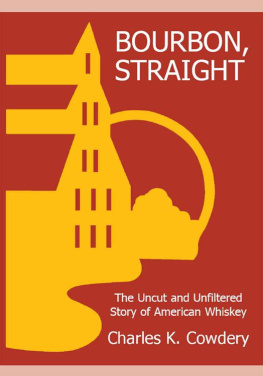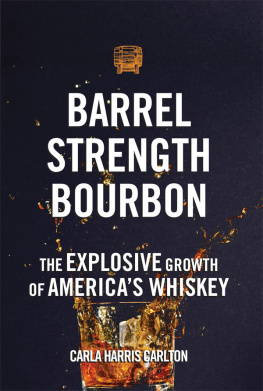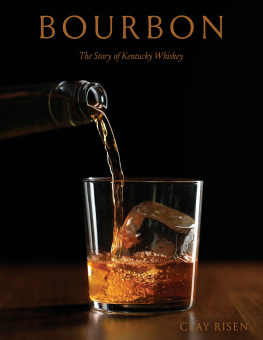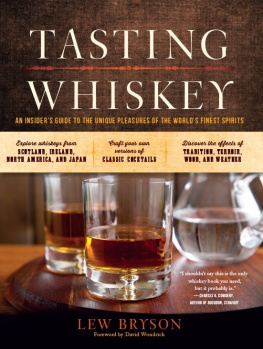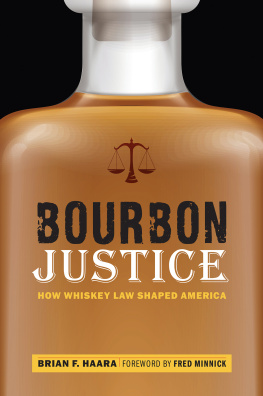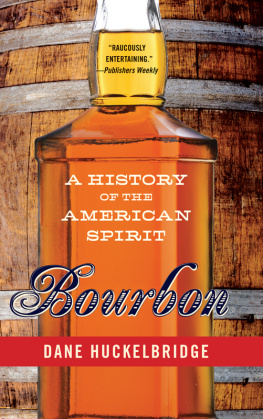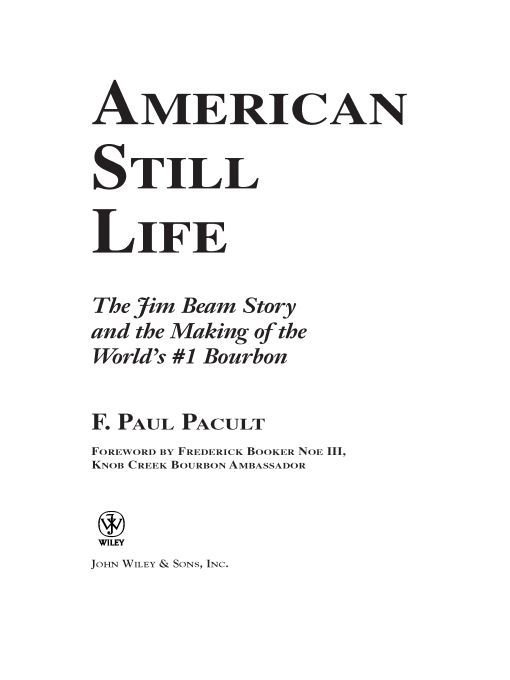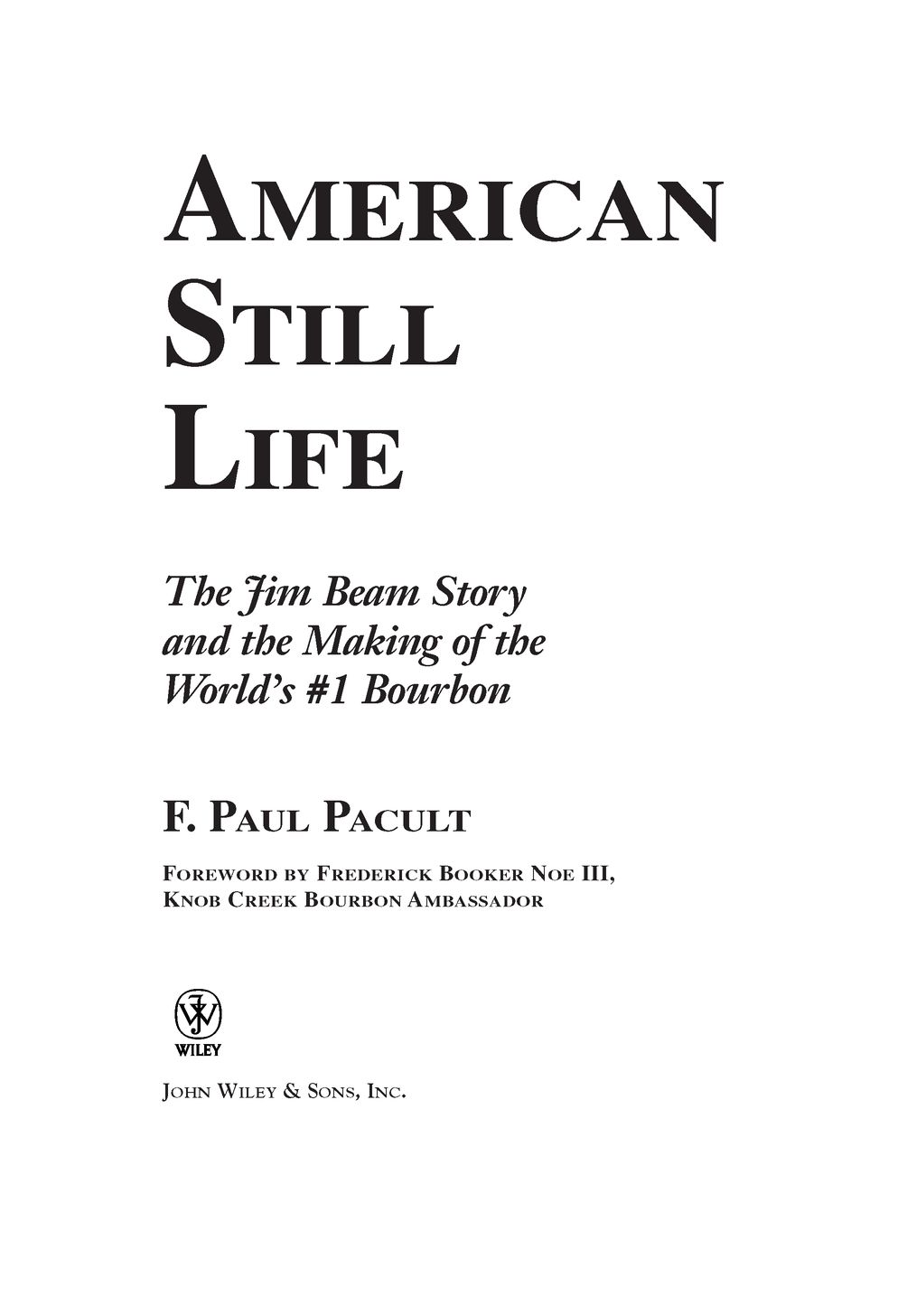Table of Contents
For Sue, forever gratefully connected to.
For Rick, forever gratefully guided by.
Foreword
While I thought I knew everything about my family, American Still Life taught me that you can always learn more about who you are and where you came from. I am proud to invite you into my world to learn about the first family of bourbonour history and our rich heritage.
As the seventh generation Beam involved in producing awardwinning bourbon, I have a keen understanding of the importance of tradition and heritage. It comes with being part of a family that can trace our bourbon-making roots back more than 200 years. The historical account describes my familys heritagecapturing our hopes, dreams, and ambitions in the process. American Still Life also offers an important history of bourbon, a history that at times reads like a novel.
Jim Beam is the No. 1 bourbon in the world, but as youll see, it is also so much more. Jim Beam is pride, Jim Beam is determination, Jim Beam is quality. Jim Beam is America. And for generations of families working in our distilleries, Jim Beam is, has been, and always will be, a way of life. American Still Life captures this pride and the essence of who we are and what bourbon is all about.
When my great-great-great-great-grandfather, Jacob Beam, brought his first bourbon to market in 1795, he had no way of knowing what he was starting. He was a distiller, hoping to earn an honest living and provide for his family. In many ways, he was just like every other pioneer who had made his way westward in America. He wanted a better life and was willing to work hard to achieve it.
More than 200 years later, Jacobs bourbon has become an American Icon and the cornerstone to my familys time-honored bourbon-making tradition. Each generation has contributed to this legacy, adding unique skills and talents. Everyone has played an invaluable part, helping Jim Beam become a successful business focused on producing the worlds finest bourbons.
When I finished this book, I had a terrific sense of pride in my family. I now have an even deeper respect for the challenges my family faced, the risks we took, and the long days we put in to make our whiskey just right.
I learned how to make bourbon from my father, Booker Noe, Jim Beams grandson. Growing up, I joined my father at the distillery, watching the Beam craftsmen make the mash and barrel up the whiskey. When I was old enough, I joined in the family tradition working nights on the bottling line. My father taught me the business from the ground up. He also taught me the importance of keeping things honest and straight.
American Still Life is an honest and straight account of my familys history, our bourbon, and the Kentucky way of life. It celebrates a part of America that is gone and recognizes another part that is still going strong.
It was a pleasure for me to read and I hope you will enjoy it as well.
Fred Noe
Preface
Snapshots from the Album of an American Family
I DIDNT COME TO appreciate and know whiskey well until 1989. Until that time, I had prided myself on being a wine journalist and instructor, surviving, even thriving in New York City. New York in the 1980s was a remarkable melting pot for the worlds wines. As American consumer interest in fine wines exploded, wines poured in from everywhere: Australia, Chile, Hungary, Argentina, Greece, Washington State, Oregon, Israel. I wrote about wine for various publications, consulted for wine shops in the northeast about what they should buy and how they should sell it, and owned and operated a wine school, Wine Courses International, out of a loft in lower Manhattan. Life was good.
Whiskey, however, was foreign territory, a dark and, in my mind, inhospitable continent. Wine was white or red. Whiskey was, after all, brown.
Then, in the winter of 1989, a friend at the New York Times, Rich Colandrea, who had been attending my wine classes, hired me to create and write a special advertising section on Scotch whisky for the Sunday Times Magazine. To my astonishment, the 28-page section turned out to be an enormous hit with Times readers, advertisers, and the Times staff. The Times requested more special sections on Scotch and other distilled spirits in 1990 and 1991. I provided them. Within two years, I was writing as much about whiskey and distilled spirits in general as about wine. Cognac, Armagnac, Eau-de-vie, Vodka, Gin, Tequila, Rum, Liqueurs, Irish whiskey, Canadian whisky, Bourbon whiskeyall distilled spiritssuddenly fell within the scope of my view-finder. I was sampling and evaluating hundreds of distilled spirits a year on top of all the wines I was still analyzing.
In 1991, I kicked off publication of F. Paul Pacults Spirit Journal, my subscription-only, advertising-free newsletter wherein I critiqued distilled spirits of all categories in as much detail as I had previously done with wine. That microscopic attention had evidently never before been afforded to spirits to any great extent. The Spirit Journalliquor industry people and subscribers told mefinally gave an independent, unbiased voice to spirits, one that had been swamped during the wine boom decades of the 1970s and 1980s.
In 1992, I received a call from Jim Beam Brands, who were then, as they are now, headquartered in Deerfield, Illinois. I had come to know Jim Beam Bourbon as Americas flagship bourbon, a hugely popular, iconic brand with a global presence. The previous year, I had reviewed in the Spirit Journal the companys four elite, super-premium small batch bourbon whiskeys, Bookers Bourbon, Basil Haydens, Bakers, and Knob Creek. The Jim Beam management team asked me if I would consider touring the nation with Booker Noe, Jim Beams grandson and the Master Distiller Emeritus of the James B. Beam Distilling Company, to introduce the companys small batch bourbons to audiences comprised of the public, trade, and press.
At the first opportunity, I hopped aboard the Booker Express. On and off for three years, as my schedule permitted, I toured the United States with this giant, affable manKansas City, San Diego, Boston, Miami, Dallas. You name the major city and, most likely, Booker and I were there at some point talking to jam-packed halls, ballrooms, and restaurants.
As I make clear in Chapter Six, the crowds we encountered were not present to see me. Maybe some were Spirit Journal subscribers, but the majority attended because they had heard of this unbelievable gentleman named Booker Noe.
What made Booker so appealing on our tours was his unbridled honesty, boundless enthusiasm for bourbon, and his good-humored, no-nonsense personality. Tall as he was wide of girth, Booker commanded the speakers table merely by sitting there. While I would be discussing with each group the merits of Basil Haydens, Bakers, and Knob Creek and describing to them what made the Jim Beam small batch bourbons different from mainstream bourbons, the audience would be itching to hear what Jim Beams grandson had to say, what knowledge he could impart about the bourbons, especially his own, the fiery, four-alarm Bookers Bourbon.


